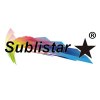DTG and DTF printers as well as screen printing are the most efficient methods to print T-shirts.
With the rise in living standards, the search for spirituality is growing. Small-scale business owners with a business savvy have seized the present opportunity.
DTF printers and DTG printers are among the most efficient printing options for personal printing with a personal touch. There is a certain amount of money needed to print on screen. If you don’t have it, the cost of making an item will be extremely expensive. There are a few domestic equipment to print DTG Printer printing. The after-sales support is reliable and provides assurance. Branded machines imported from abroad are costly which can make it difficult for small-scale entrepreneurs to manage their budgets.
You can design patterns using the DTF printer.
Machine embroidery is a form of embroidery. The majority of T-shirts that have customized designs are printed nowadays. Pasting is not very effective and the most suitable printers to customize are DTF and DTG. DTF Printers are patterns that have been designed or custom-designed ones that can be printed with the printer, a powder shaker, and a dryer. Then the heat transfer process is completed by using a hot press.
What kind of T-shirt do you wish to design? It is recommended to use DTF as well as DTG Printers when you’re making a little customizing or if the pattern is more varied. Printing can be completed on one piece of paper without the need for plates, even if there’s a photo. There is no need to store T-shirts in blank form, but you can print them quickly after you receive your order. Printing is as simple as. Prices for custom-designed patterns are affordable and it is possible to print any design on your personal computer at any point.
Silkscreen is not suited for production in mass quantities. There are many procedures, regardless of the method you choose to use. The main benefit is the efficiency of production in mass quantities. Today, the majority of screen printing is done by major manufacturers.
You can pick a three-dimensional design. Custom-designed embroidered T-shirts are an excellent option. The embroidered patterns are soft to the touch, bright in color, and strong in three-dimensionality. Digital direct injection is more costly.
The DTF printer can select the fabric
The fabric you select for your customized T-shirts plays an important part. The majority of T-shirts are constructed of pure cotton.
Certain pure cotton fabrics are mixed with polyester to increase the ability to wick moisture. You can design a T-shirt to dry quickly and achieve a more efficient moisture-wicking effect.
Cotton made of polyester should be used in a variety of ways. It is extremely difficult to stretch or wrinkle. It’s soft and thick however, the fabric is tough and doesn’t provide the same ease as cotton does. It’s acceptable when the shirt is composed of at least 65% cotton. If it’s 35% cotton, do not request it. It’s uncomfortable and has pilled. Why would you spend money on things that aren’t needed?
Combed cotton is a material which a lot of T-shirts are made from although they’re 100% cotton. There are a variety of socks in the box and there’s no problem. It is pure cotton. It’s still superior to ordinary cotton. It makes T-shirts more soft and more comfortable to wash. Also, they come with a glossy.
Silk cotton fabric is created of cotton and specialized techniques like silking, singing, and other methods to produce a smooth, wrinkle-free bright, clear, and premium silk. The raw material is used to create high-quality fabric for t-shirts. It not only preserves the natural characteristics of cotton, but also offers numerous other advantages, such as being breathable, moisture-absorbent, with a great hand feel a wide range of patterns, and comfy clothes.
Cotton and Hemp Hemp fibers come from hemp fabric and were the first anti-hemp material that was used throughout the globe. It is a cellulose fiber with many characteristics similar to cotton fiber. It is also referred to as a cool and noble fiber because of its low yield. Linen is a tough style and is a durable, comfortable material. It is a favorite among people from all walks of life.
The most popular is cotton fabric used in T-shirts. It’s also economical and breathable, as well as skin-friendly, and water-absorbent. It’s 100% cotton, which is different from other premium fabrics. It retains the original qualities of pure, high-end cotton. Pure cotton also comes at an affordable price which makes it a more sensible option. Certain 100 percent cotton fabrics are treated using special techniques like depilation or softening. They are also a part of the top-end fabrics.
DTF Printing
The DTF printer can print on any color T-shirt
The printer was limited to printing a single-color T-shirt before the time when technology advanced. DTF Printer can be considered a universal printer within the clothing industry. Print any design you like as you can use a combination of premium powder and hot-melt are employed. Feedback is utilized by real customers, and is visible.
The creation of custom corporate shirts is a fantastic way for companies to showcase their company values. Do not be like other businesses. DTF Printing machine prints any color. University clubs, student unions, etc. Each year, there is an increase in demand.
DTG Printers are designed for clothing made of cotton. Cotton clothes are often made of other components. DTF Printers are the ideal option for small-scale businesses.
